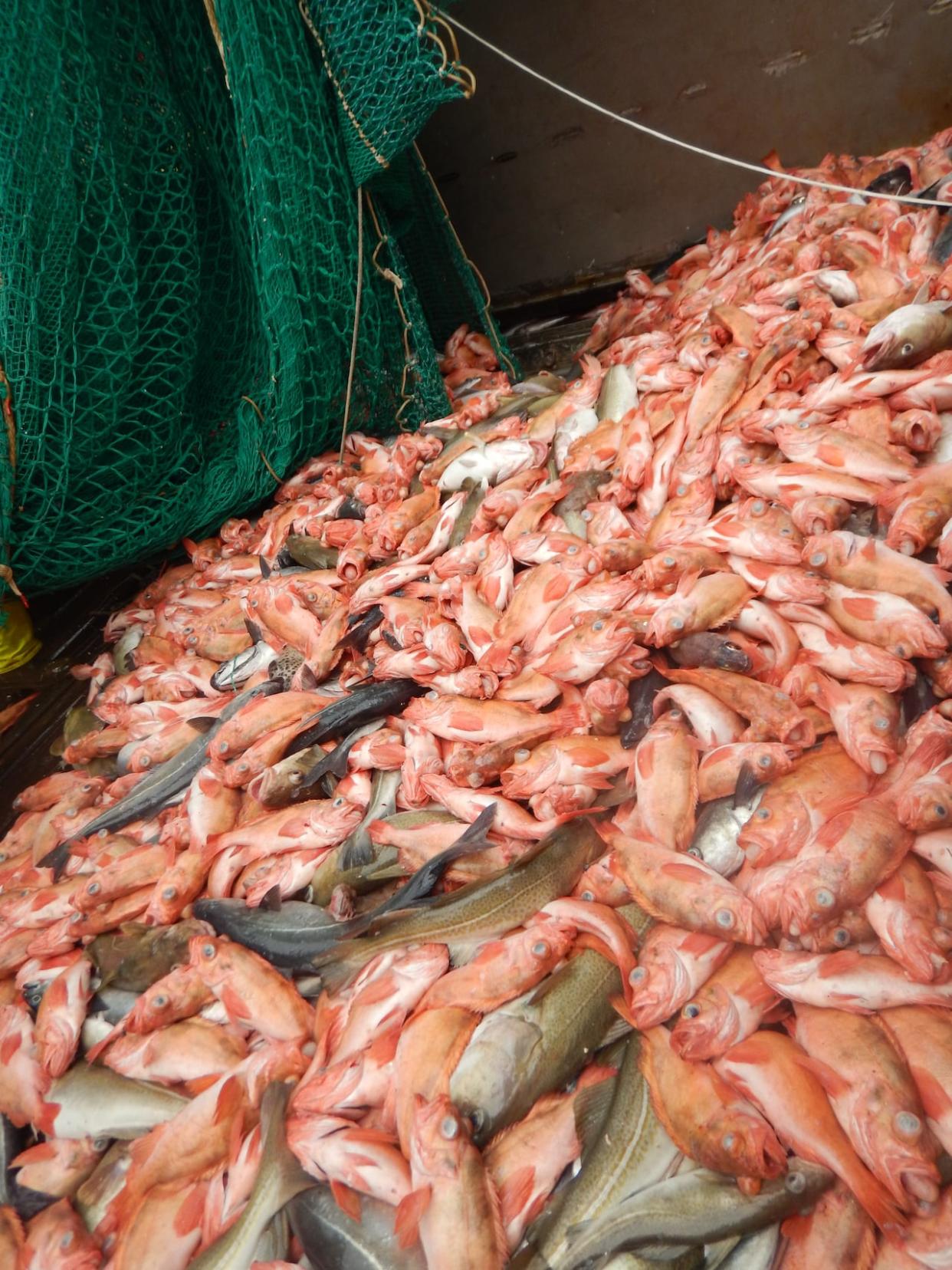Ottawa revamps redfish allocation in Gulf of St. Lawrence, but N.S. keeps largest share

UPDATE: On Saturday, the Department of Fisheries and Oceans released anticipated redfish quota amounts for each province and how they compare to historical allocations. The figures are Newfoundland and Labrador: 19% (+2.0), Nova Scotia: 33% (-5.8), New Brunswick: 11% (+3.1), P.E.I.: 5% (+0.5); Quebec: 32% (+0.2). DFO says its figures are subject to change.
Following months of anticipation and lobbying in Quebec, Newfoundland and Labrador, and Nova Scotia, the federal government has announced how it will allocate access when the Gulf of St. Lawrence redfish fishery reopens later this year after a nearly 30-year hiatus.
The details were announced on Friday by Fisheries Minister Diane Lebouthillier at a news conference in Gaspé, Que.
Under the new terms from the Department of Fisheries and Oceans (DFO), Indigenous fishers, and shrimp harvesters from Quebec and Atlantic Canada — who'd been hoping to get a piece of the redfish action following a reduction in shrimp quotas — will each get 10 per cent of the allocation.
"This decision will not only provide a modest income to [shrimp] harvesters who may want to transition to fishing redfish, it will also help advance reconciliation with Indigenous peoples," said Lebouthillier.
Lebouthillier said Nova Scotia will continue to receive the largest chunk of the fishery.
Kent Smith, Nova Scotia's fisheries and aquaculture minister, had previously warned Ottawa that "hundreds of jobs" would be at stake if the province's share was reduced.
He said Friday that he's still waiting for more details to determine what the province's actual allocation will be.
Before the fishery closed decades ago, 74 per cent of the redfish quota was held by offshore fleets, most of them located in Nova Scotia. On Friday. DFO said that share will be reduced to 58 per cent in 2024.
In an interview with Mainstreet Sydney, Jan Voutier, the manager of Ka'Le Bay Fisheries in Cape Breton, said it's too early to determine the impact of these changes but, on first glimpse, they don't seem as bad as many feared.
"We're still digesting this, and it's going to take a few days to really dig down into this and understand what's happened and how it's going to affect us," he said.
"We've advocated to maintain the historical quota. So if she's respecting some of that I'll be appreciative. But again, we really need to dig in to make sure that it is good for Nova Scotians and Nova Scotia companies," Smith told CBC News.
Fishery has rebounded since '95 closure
The commercial redfish fishery was shuttered in 1995, but in the years since, there's been a remarkable turnaround. The DFO said the total size of the fishery in the Gulf of St. Lawrence is now estimated to be just over two million tonnes.
The total allowable catch for the revamped fishery will be 25,000 tonnes, said DFO.
An experimental fishery has been in place since 2018, but 2024 will mark its official reopening, which will roll out in two phases, said the department.
The first phase will last two years and "give fish harvesters time to prepare, further develop markets, and strengthen the sector's capacity to transform," while the second will be focused on expansion and long-term development.
In a release, environmental group Oceans North said it welcomes DFO's "low and slow" approach to reopening.
"The fact that redfish has reached historic levels after a long moratorium on fishing offers us a rare second chance to do things differently," said John Couture, senior fisheries adviser at Oceans North.
"We're hopeful that this can be done in a way that will benefit both the ecosystem and coastal communities in the long run."
DFO later provided details related to shrimp fishermen in Quebec. It said harvesters fishing off Esquiman, Anticosti, Sept-Îles and the Estuary will share 3,600 tonnes in 2024.
More information on the 2024 allocation for the fishery is available here.
MORE TOP STORIES


